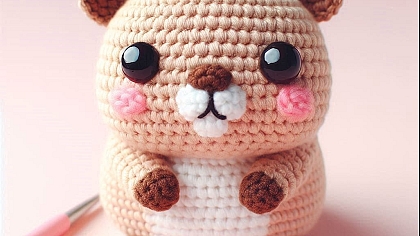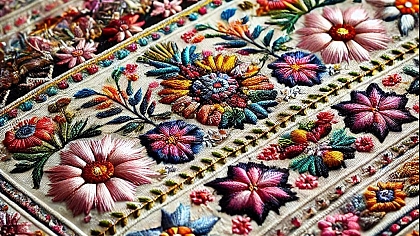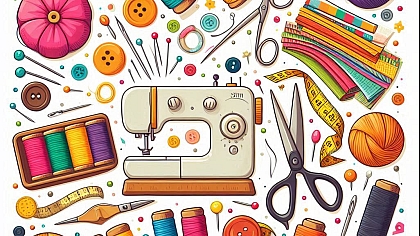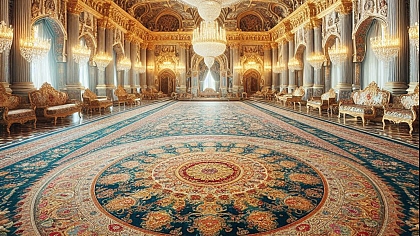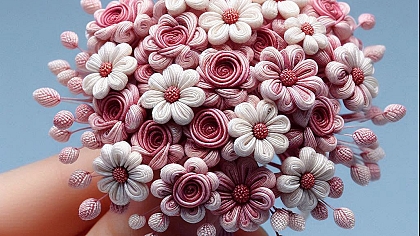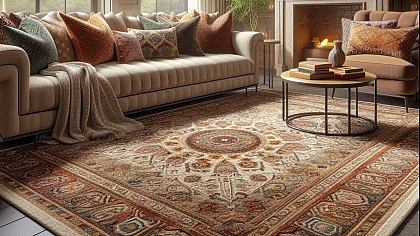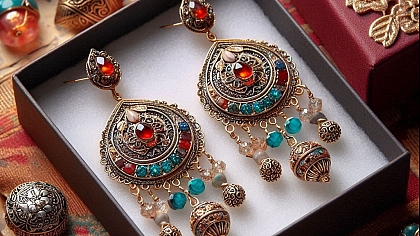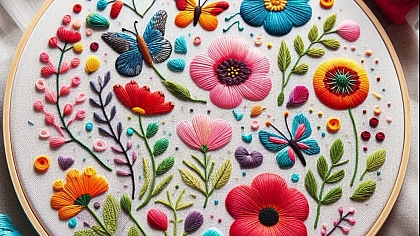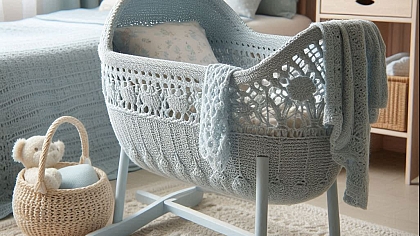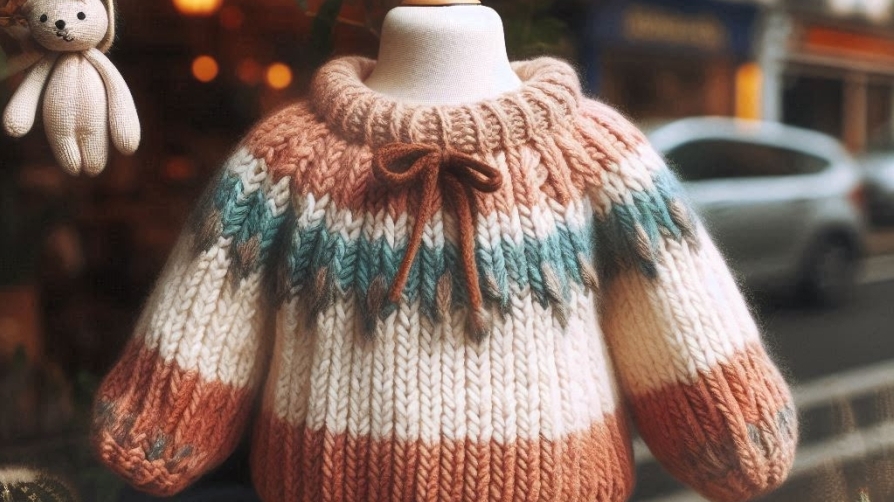
Perfecting Your Knit: Essential Accessories for Every Project
Knitting is an art form that connects us with the past while allowing us to create something new, something personal. Whether you're knitting a cozy scarf for a loved one or tackling a complex sweater pattern for yourself, the joy of knitting lies in the process as much as in the final product. However, the success of any knitting project is not just about the yarn and needles you choose—it's also about the accessories that help you along the way. These essential tools can transform your knitting experience from frustrating to flawless, making your projects smoother, more enjoyable, and ultimately more successful.
In this guide, we'll explore the essential accessories every knitter should have in their toolkit. From stitch markers to yarn winders, each of these tools plays a crucial role in perfecting your knit. We'll delve into the details of how and why each accessory is used, helping you understand the nuances that can make all the difference in your knitting.
The Magic of Stitch Markers
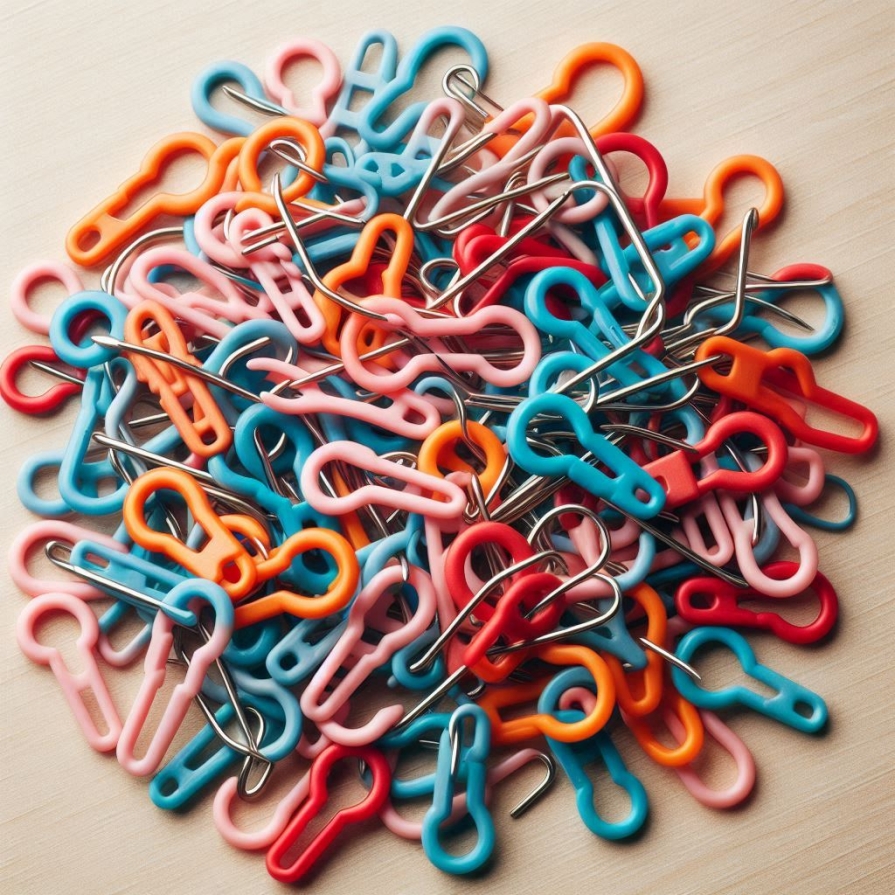
Stitch markers are often overlooked by beginners, but they are truly magical little tools that can save you hours of frustration. These small rings, usually made of plastic or metal, are used to mark specific points in your knitting. Whether you're indicating the beginning of a round in circular knitting, marking pattern repeats, or keeping track of decreases and increases, stitch markers are invaluable.
Imagine you're working on a lace shawl with a complex pattern repeat. Without stitch markers, you would have to constantly count stitches to ensure you're on track, which is both time-consuming and error-prone. With stitch markers, you can simply place one at the start of each repeat, allowing you to knit confidently without second-guessing yourself.
There are different types of stitch markers to suit various needs. Some are fixed rings that you slip onto your needle, while others are openable and can be clipped directly onto your stitches. The latter are particularly useful when you're working with delicate yarns or complex patterns where you need to move the marker frequently.
For those who love a bit of flair, decorative stitch markers are available in endless designs, from simple beads to tiny charms. Not only do these add a touch of personality to your knitting, but they also make it easier to differentiate between markers when you're using several at once.
The Role of Row Counters
When you're deep into a project, especially one with intricate patterns, keeping track of your rows is crucial. Enter the row counter—a small, often digital, device that helps you keep track of how many rows you've completed. While some knitters prefer to rely on memory or handwritten notes, row counters offer a level of precision and convenience that can't be matched.
There are various types of row counters available, from the basic clicker-style ones that fit onto your needle to more advanced digital versions with multiple counters. The latter is particularly useful when you're working on a pattern with different sections that need to be tracked separately. For example, if you're knitting a sweater with different stitch patterns on the body and sleeves, a digital row counter can help you keep track of each section without confusion.
Using a row counter can be a game-changer for projects that require frequent increases or decreases. Rather than constantly pausing to recount your rows, you can simply click the counter after each row, ensuring that you're always on track. This not only saves time but also allows you to focus more on the rhythm and enjoyment of your knitting.
The Unsung Heroes: Tapestry Needles

Tapestry needles, also known as darning needles, are the unsung heroes of the knitting world. While they might not be as glamorous as your favorite pair of knitting needles, they play a crucial role in finishing your projects. These blunt-tipped needles are used for weaving in ends, seaming pieces together, and even for adding decorative embroidery to your finished knitwear.
When it comes to weaving in ends, a tapestry needle allows you to securely hide the loose ends of your yarn within the fabric of your knitting. This not only gives your project a clean, professional finish but also prevents it from unraveling over time. Choosing the right size of tapestry needle is important, as a needle that is too large can damage delicate yarns, while one that is too small can be difficult to thread.
For seaming, tapestry needles are indispensable. Whether you're joining the sides of a sweater or attaching a sleeve, a well-executed seam can make all the difference in the final appearance of your project. The mattress stitch, which is a common method for seaming knitting, relies on the use of a tapestry needle to create nearly invisible joins.
Tapestry needles also come in handy for more creative tasks. If you enjoy adding a personal touch to your knitwear, you can use a tapestry needle to embroider patterns, initials, or other designs onto your finished pieces. This can be a fun way to make your projects truly unique, turning a simple scarf or hat into a work of art.
The Convenience of Needle Gauges
As a knitter, you know that needle size is crucial to the success of your project. Even a slight variation in size can affect your gauge, and consequently, the fit and drape of your finished piece. This is where a needle gauge comes into play. This small, often flat tool is designed to measure the diameter of your knitting needles, ensuring that you're using the correct size for your project.
Needle gauges typically have a series of holes, each corresponding to a different needle size. To use it, you simply insert your needle into the holes until you find the one that fits snugly. This is particularly useful when you're using older needles that have lost their size markings or when you're unsure if a needle has been incorrectly labeled.
In addition to measuring needles, some needle gauges also have a ruler along the edge, allowing you to measure your knitting swatches. This is essential when you're trying to match a pattern's gauge, as even a small discrepancy can lead to a finished garment that's too large or too small. By measuring your swatch with a needle gauge, you can make any necessary adjustments before you begin your project, saving you from potential disappointment later on.
For knitters who work with a variety of needle materials, such as bamboo, metal, or plastic, a needle gauge can also help ensure consistency. Different materials can sometimes feel slightly different in size, even when they are marked the same. Using a needle gauge allows you to confirm that you're getting the exact size you need, regardless of the material.
The Lifesaver: Cable Needles

Cable needles are an essential accessory for any knitter who enjoys working with cables. These small, often curved, needles are used to temporarily hold stitches while you create the twists and turns that define cable knitting. Without a cable needle, achieving those beautiful, intricate designs would be nearly impossible.
Cable needles come in various shapes and sizes, each suited to different types of cables. The most common types are the U-shaped or J-shaped needles, which are designed to hold stitches securely without slipping. Some knitters prefer straight cable needles, while others opt for ones with a slight bend or curve, which can help prevent stitches from falling off.
Using a cable needle might seem intimidating at first, but with a bit of practice, it becomes second nature. The key is to understand the rhythm of your cable pattern and to use the cable needle as an extension of your knitting needles. When you reach the point in your pattern where a cable twist is required, you simply slip the necessary stitches onto the cable needle, hold it either in front or behind your work, and continue knitting according to the pattern. Once the twist is complete, you knit the stitches from the cable needle back onto your main needle, creating the characteristic cable twist.
One of the most important aspects of using a cable needle is choosing the right size. The cable needle should be roughly the same size as your knitting needles to ensure that the tension of your stitches remains consistent. If the cable needle is too small, the stitches may become too tight, while a needle that's too large can cause the stitches to become loose and uneven.
The Luxury of Blocking Mats and Pins
Blocking is a step that many knitters are tempted to skip, especially when they're eager to see the final result of their hard work. However, blocking is an essential process that can transform your knitting, giving it a professional finish. Blocking mats and pins are the tools that make this process possible.
Blocking mats are usually made of foam or other soft materials, providing a cushioned surface on which you can pin your knitted pieces. These mats often come in interlocking tiles, allowing you to customize the size and shape of your blocking surface to suit your project. Whether you're blocking a small lace shawl or a large sweater, blocking mats give you the flexibility to do so comfortably.
Blocking pins are used to secure your knitting in place while it dries. They come in various shapes, including T-pins and U-pins, and are designed to hold your knitting without damaging the fabric. For delicate lacework, blocking wires can also be used in conjunction with pins to create clean, straight edges.
The process of blocking involves wetting or steaming your knitting to relax the fibers, then stretching and shaping it to the desired dimensions on the blocking mat. Once pinned in place, the knitting is left to dry, setting the shape and size of the piece. This step is particularly important for lace patterns, where blocking can open up the stitches and reveal the full beauty of the design.
Blocking is not just for lace, however. Even simple stockinette or garter stitch projects can benefit from a good blocking, as it helps to even out the stitches and create a smoother, more polished fabric. For garments, blocking can also help to ensure a better fit by allowing you to gently adjust the size and shape before wearing.
The Time-Saver: Yarn Winders and Swifts
If you've ever struggled with a tangled skein of yarn, you know how frustrating it can be to stop in the middle of your knitting to deal with knots. Yarn winders and swifts are tools designed to prevent this problem, making your knitting experience much smoother and more enjoyable.
A yarn winder is a device that winds yarn from a skein into a neat, compact ball, known as a cake. These yarn cakes not only look tidy but also allow the yarn to pull smoothly from the center, reducing the risk of tangles as you knit. Yarn winders are particularly useful when working with hand-dyed or luxury yarns, where you want to minimize handling to preserve the quality of the fiber.
Swifts are another essential tool for managing your yarn. A swift is a large, umbrella-like device that holds your skein of yarn in place while you wind it into a ball using the yarn winder. The swift spins freely, allowing the yarn to unwind smoothly and evenly. Without a swift, winding yarn can be a two-person job, with one person holding the skein while the other winds. With a swift, you can easily wind yarn on your own, saving time and effort.
Using a yarn winder and swift not only saves you from the frustration of tangled yarn but also helps to keep your yarn in better condition. By winding your yarn into cakes before you start knitting, you can avoid stretching or damaging the fibers, ensuring that your finished project looks its best.
The Versatility of Knitting Needles

While knitting needles are your primary tools, knitted hooks are a versatile accessory that no knitter should be without. These small, hooked tools are invaluable for picking up dropped stitches, adding decorative edges, and even for joining pieces together.
One of the most common uses for a knitting needle in knitting is to rescue dropped stitches. When a stitch slips off your needle, it can quickly unravel, creating a run in your fabric. A knitting needle allows you to easily pick up the dropped stitch and work it back up to the correct row, saving you from the need to unravel several rows of knitting.
Knitting needles are also useful for adding decorative elements to your knitting. For example, you can use a knitting needle to create a delicate picot edge on a shawl or to add a row of crochet trim to a sweater. These small details can add a lot of personality and uniqueness to your projects.
In addition, knitting needles can be used for seaming pieces together. The slip stitch, a basic crochet stitch, is often used to join knitted pieces with a nearly invisible seam. This method is particularly useful for projects like blankets, where you want to create a strong, durable join without adding bulk.
The Security of Stitch Holders
Stitch holders are another essential accessory that can make your knitting projects more manageable. These long, usually metal or plastic, pins are used to hold stitches that you're not currently working on. This is particularly useful when you're knitting garments that require you to set aside stitches for later, such as the sleeves of a sweater or the front of a cardigan.
Using a stitch holder is simple: you just slip the stitches you want to hold onto the holder, then close it to secure the stitches in place. This allows you to continue knitting the rest of your project without worrying about losing those stitches. When you're ready to work on them again, you can easily transfer the stitches back onto your knitting needle.
Stitch holders come in various sizes to accommodate different numbers of stitches. For smaller projects, such as mittens or socks, a small stitch holder may be sufficient. For larger projects, like sweaters, you'll need a larger holder that can accommodate more stitches.
In addition to their practical use, stitch holders can also be a lifesaver when you need to take a break from your knitting. If you're putting a project on hold for a while, transferring the stitches onto a holder ensures that they won't slip off the needles, even if the project gets moved around.
The Finishing Touch: Blocking Combs

While blocking mats and pins are essential for blocking, blocking combs add an extra level of precision and convenience. These comb-like tools are designed to hold multiple pins at once, allowing you to block straight edges more easily and evenly.
Blocking combs are particularly useful for large projects, such as shawls, where you need to pin down long edges. By using combs instead of individual pins, you can ensure that the tension is consistent across the entire edge, resulting in a smoother, more professional finish.
To use blocking combs, you simply insert the comb into the edge of your knitting, then pin it down on the blocking mat. The comb holds the fabric securely in place, allowing you to stretch and shape it as needed. Once your project is dry, you can remove the combs, leaving you with a perfectly blocked piece.
Blocking combs can also be used in combination with blocking wires for even greater precision. The wires help to create a straight edge, while the combs hold the fabric securely in place. This method is particularly useful for lace shawls, where you want to ensure that the delicate points and edges are perfectly defined.
The Indispensable Tape Measure
A tape measure might seem like a simple tool, but it's one of the most indispensable accessories in a knitter's toolkit. Accurate measurements are crucial in knitting, whether you're checking the size of your swatch, measuring your progress, or ensuring that your finished piece fits as intended.
When working on a project, you'll often need to measure your knitting to check your progress. For example, when knitting a sweater, you'll need to measure the length of the body and sleeves to ensure that they match the pattern's specifications. A tape measure allows you to do this quickly and accurately, without the need to guess or estimate.
Tape measures are also essential when swatching. Before you begin a project, it's important to knit a swatch and measure your gauge to ensure that your finished piece will have the correct size and fit. A tape measure allows you to measure the number of stitches and rows per inch in your swatch, so you can adjust your needle size if necessary.
In addition to measuring your knitting, a tape measure is useful for taking body measurements, especially when knitting garments. Knowing your exact measurements allows you to choose the correct size in a pattern, or to make adjustments to ensure a perfect fit.
The Importance of Scissors

No knitting toolkit is complete without a good pair of scissors. While it might seem like any pair will do, having a dedicated pair of sharp, small scissors makes a big difference in the ease and precision of your work.
Scissors are used frequently in knitting, from cutting yarn to trimming ends. A small, sharp pair of scissors allows you to make clean cuts without fraying the yarn. This is especially important when working with delicate fibers, where a clean cut can prevent the yarn from unraveling.
When choosing scissors, it's worth investing in a pair designed specifically for crafting. These scissors are typically small, with pointed tips that allow you to cut close to your work. Some scissors also come with a sheath or case, making them easy to store and carry without damaging the blades.
In addition to their practical use, a good pair of scissors can also add a touch of elegance to your knitting toolkit. Many crafters enjoy choosing scissors with decorative handles or unique designs, making them not only functional but also a pleasure to use.
Creating Your Perfect Knitting Toolkit
As a knitter, your tools are an extension of your creativity. While yarn and needles are the stars of the show, the right accessories can elevate your knitting to the next level. By incorporating these essential tools into your knitting routine, you'll find that your projects become more enjoyable, more precise, and ultimately more successful.
Whether you're a beginner just starting to build your toolkit or an experienced knitter looking to refine your craft, these accessories are the key to perfecting your knit. Each tool has its own unique role, and understanding how to use them effectively will help you achieve the results you desire.
So, take the time to invest in your knitting accessories. With the right tools at your disposal, you'll be well-equipped to tackle any project, from the simplest scarf to the most intricate lace shawl. And as you perfect your knit, you'll discover the true joy of knitting—a joy that comes not just from the finished product, but from the process itself.

